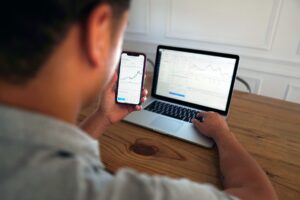Exploring the Importance of Forex Trading Daily Volume for Traders
Forex trading is the largest and most liquid financial market in the world, with trillions of dollars traded every day. As a forex trader, understanding the importance of daily trading volume is crucial for making informed trading decisions. In this article, we will explore why trading volume matters and how it can provide valuable insights for traders.
Trading volume refers to the number of shares or contracts traded in a given period. In the forex market, trading volume is measured in lots. A lot represents a standardized quantity of a currency pair being traded. For example, a standard lot in the forex market is equivalent to 100,000 units of the base currency.
One of the main reasons why daily trading volume is important for forex traders is that it provides an indication of market liquidity. Liquidity refers to the ease with which an asset can be bought or sold without causing significant price movements. Higher trading volume generally indicates greater liquidity, which means that traders can enter or exit positions more easily at desired prices.
When trading volume is high, it suggests that there are more market participants actively buying and selling currencies. This increased activity leads to tighter bid-ask spreads, which are the difference between the buying and selling prices of a currency pair. Tighter spreads reduce trading costs for traders, making it more cost-effective to execute trades.
Furthermore, high trading volume increases market efficiency by narrowing the gap between the bid and ask prices. This means that traders can benefit from more accurate pricing, reducing the risk of slippage when entering or exiting trades. Slippage occurs when the execution price of a trade differs from the expected price, resulting in potential losses for traders.
Another reason why daily trading volume is important for forex traders is its role in technical analysis. Technical analysis is a popular method used by traders to forecast future price movements based on historical price data. Volume is a key component of many technical indicators and can provide valuable insights into market trends and potential reversals.
One widely used technical indicator that incorporates trading volume is the volume-weighted average price (VWAP). The VWAP is calculated by multiplying the volume traded at each price level by the corresponding price and then dividing the total by the cumulative volume. The VWAP can help traders identify the average price at which most trading activity has occurred, providing a reference point for potential support or resistance levels.
Additionally, volume-based indicators such as the on-balance volume (OBV) and the accumulation/distribution line (A/D line) can help traders confirm the strength of a trend or identify potential trend reversals. These indicators measure the volume of trades flowing into or out of a currency pair and compare it to price movements. Divergences between volume and price can indicate a weakening trend or an upcoming reversal.
Moreover, daily trading volume can provide insights into market sentiment and investor behavior. Higher trading volume during specific times of the day or week can indicate increased market participation or the release of important economic data. Traders can use this information to adjust their trading strategies accordingly, taking advantage of higher volatility or avoiding potential market disruptions.
In conclusion, daily trading volume plays a vital role in forex trading. It provides valuable information about market liquidity, cost-efficiency, and price accuracy. Additionally, trading volume is an essential component of technical analysis, helping traders identify trends, support and resistance levels, and potential reversals. By paying attention to daily trading volume, forex traders can make more informed trading decisions and increase their chances of success in the dynamic forex market.






